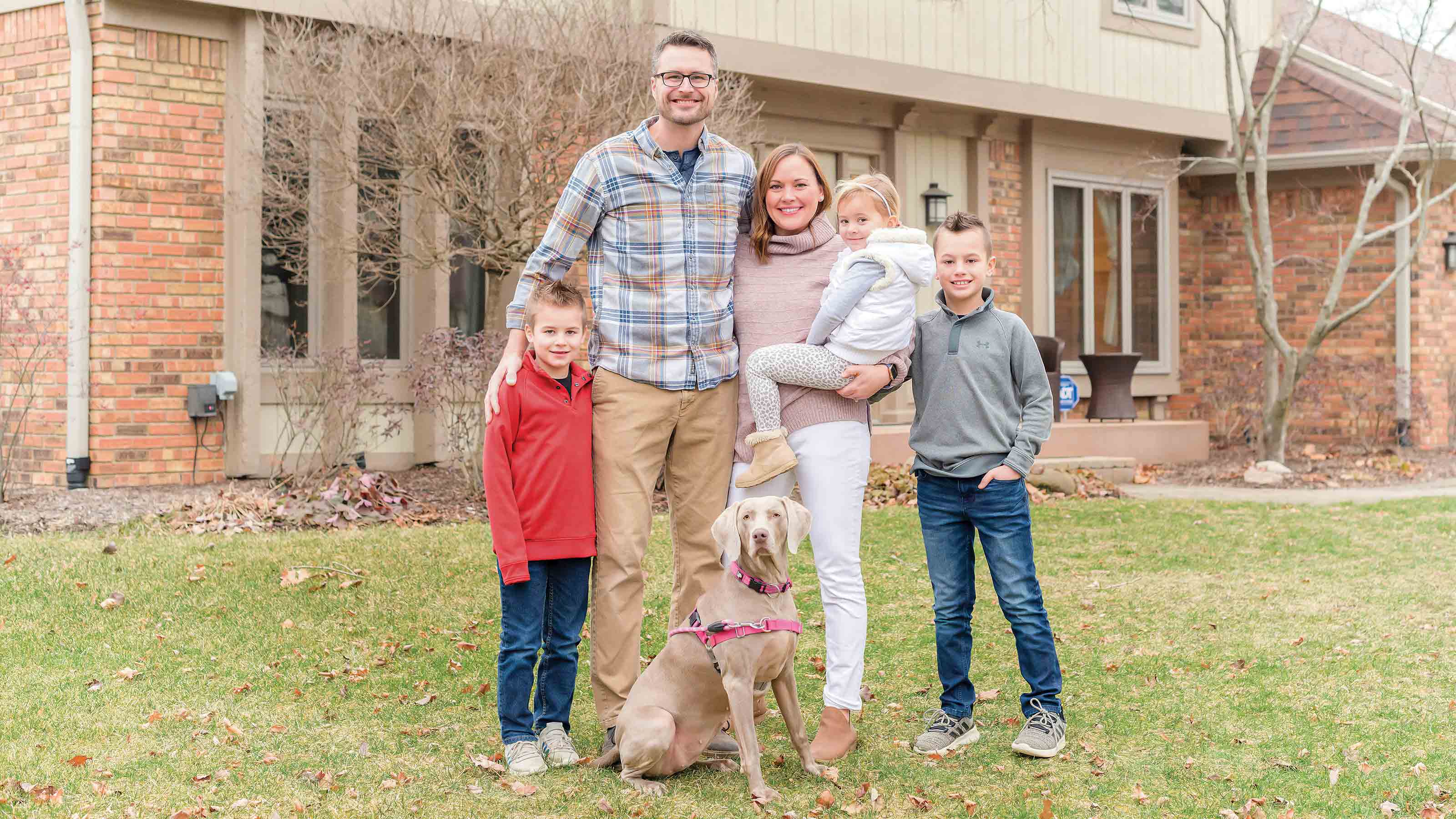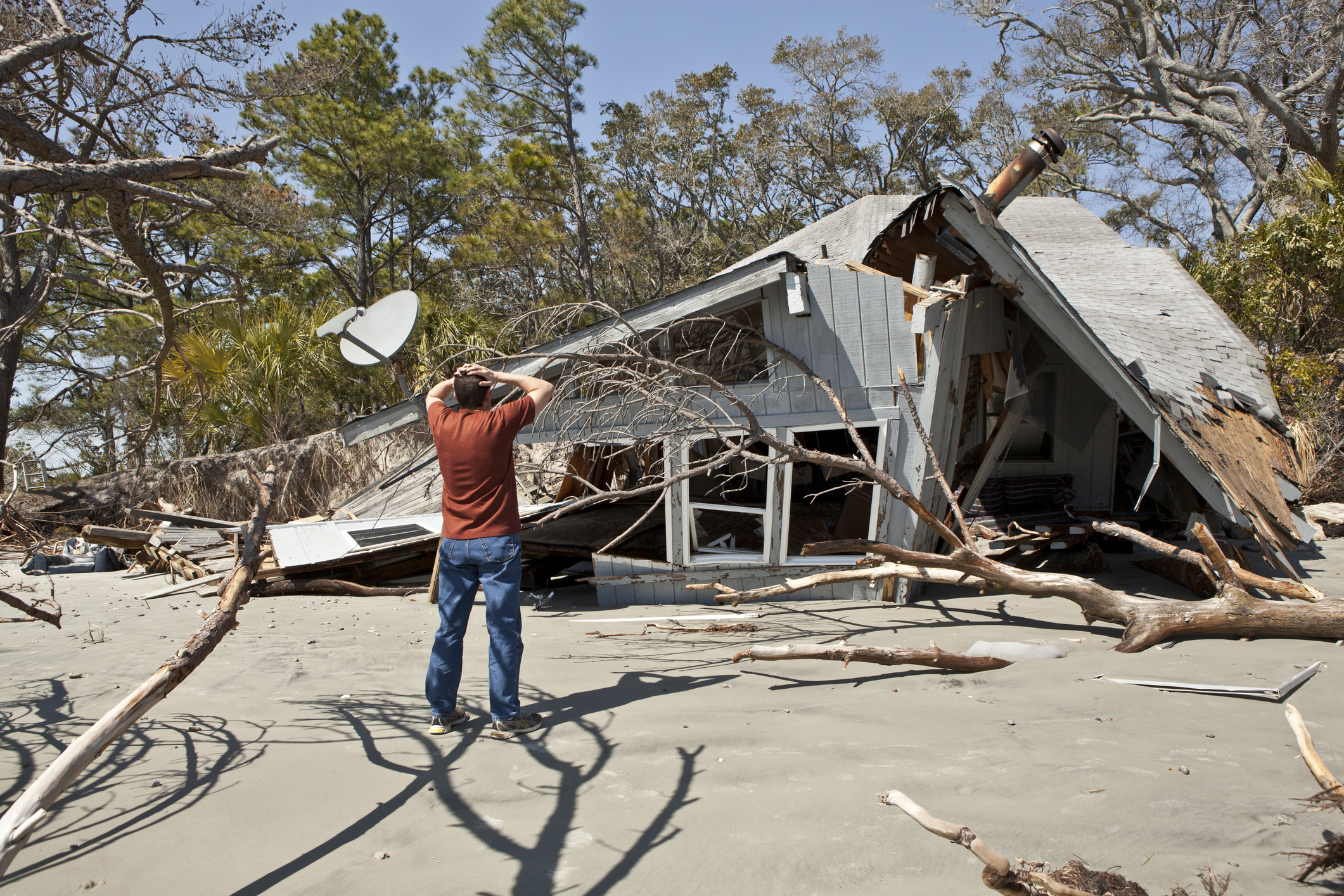Home Buyers Loving the Suburbs Again
Urban condos found little love as telecommuting home buyers bid up prices far from city centers.


For years, buyers have been flocking to cities and close-in suburbs, seeking a boost in quality of life by shortening their commutes and gaining easy access to restaurants and cultural events. The pandemic turned that trend on its head.
Last year, a number of city dwellers migrated to the suburbs and exurbs to get more space, both indoors and outdoors. Gaining the freedom to telecommute gave more buyers the ability to move from urban centers. A survey from the American Institute of CPAs found that 42% of employed Americans worked remotely at some point during the pandemic. Companies such as Twitter, REI and Square have announced plans to let employees work remotely indefinitely.
“With employers allowing their staff to work remotely long term, someone who was living in a smaller home in a city can now live two hours away in a bigger, more affordable house,” says Keith Ard, president of RE/MAX Gold, a real estate brokerage in northern California and Nevada.

Sign up for Kiplinger’s Free E-Newsletters
Profit and prosper with the best of expert advice on investing, taxes, retirement, personal finance and more - straight to your e-mail.
Profit and prosper with the best of expert advice - straight to your e-mail.
Jennifer Baxter, an agent at RE/MAX Regency in Suwanee and Cumming, Ga., near Atlanta, witnessed this firsthand. “There’s more strain on supply here than ever,” she says. “I’ve had to reach out to agents who do a lot of listings in specific neighborhoods to find out about homes before they even come on the market.”
Meanwhile, “condo listings in urban cities are sitting on the market,” says Larry Prigal, co-owner of the Prigal Brothers and Associates real estate team at Compass, in the metropolitan Washington, D.C., area. “A lot of buyers don’t want to live in close proximity to other people right now.”
That trend has been a boon to suburban and small-city sellers. Dana and Graham Gillie sold their four-bedroom house in Carmel, Ind., a city with a population of about 100,000 north of Indianapolis, for $25,000 above list price in a single day in December. They received five offers, including one from a buyer who didn’t see the home in person before submitting the bid. That was the offer they accepted.
The Gillies, who have three children, ages 8, 6 and 4, upsized from a 1,900-square-foot house to a 2,900-square-foot house around the corner. “We wanted to stay in the same school district, and we had gotten to the point where we just needed more space,” Graham says.
But buyers who want to leave city and close-in suburban condos and townhomes have struggled. Abbie and Joe Kratowicz, who traded up from a townhouse near Atlanta, faced stiff competition for homes in their desired neighborhood in Dallas, Ga., which is nearly 40 miles from downtown Atlanta. Homes there had been selling like hotcakes for months. Then they spotted a four-bedroom Craftsman-style house that ticked all of their boxes, including a backyard for their Doberman pinscher, Max, and space for a home office for Joe, a logistics manager at Home Depot who has been working remotely since last March. In the couple’s townhome, “Joe’s office was our kitchen table, which was driving me crazy,” says Abbie, who is a dental hygienist.
The Kratowiczes made an offer $6,000 above list price the day the Dallas house hit the market. Their bid beat six others, and they closed in October at a purchase price of $445,000.
Soaring prices
Despite a global pandemic and an economic downturn, U.S. home prices pushed new boundaries last year: The national median sale price for existing homes hit $310,800 in November, marking 105 straight months of year-over-year gains, according to data from the National Association of Realtors.
A slew of cities saw double-digit price growth. Among the biggest gainers were smaller cities and exurban enclaves accessible to, but not too close to, major metro areas, such as Bridgeport, Conn., and Oxnard, Cal.
Millions of home buyers like the Kratowiczes had to jump through hoops amid an acute housing shortage — while sellers like the Gillies had their pick of buyers engaged in bidding wars. Unsold inventory fell to a 2.3-month supply in November, down from 3.7 months in November 2019, according to the NAR (six to seven months of inventory is considered balanced between buyers and sellers). The average home sold in just 21 days that month.
It’s a dramatically different tale than what happened in the 2008–09 recession, when home prices tanked and millions of Americans lost their homes to foreclosure. “This time the government was very proactive in rolling out programs designed to lessen the impact of the financial distress on homeowners,” says Danielle Hale, chief economist at Realtor.com.
Competition for a limited number of homes isn’t the only reason U.S. home prices soared last year. Mortgage rates dropped to all-time lows, with the average 30-year rate sinking to 2.65% in early January, Freddie Mac reports. “A sub-3% mortgage rate is phenomenal and unprecedented,” says Guy Cecala, chief executive and publisher of Inside Mortgage Finance. “There has been a line out the door for mortgages.”
Ard, of RE/MAX Gold, says record-low mortgage rates “have enabled more people to purchase their first home or to trade up to a larger home.”
What’s ahead for 2021
Redfin, Zillow and Realtor.com all forecast modest home price gains this year. Daryl Fairweather, Redfin’s chief economist, says slowly rising mortgage rates, paired with an increase in new listings, will trigger a national average price growth of about 5%, down just slightly from 6% last year.
Hale, Realtor.com’s chief economist, predicts the median existing-home sales price will increase 5.7% in 2021. “We expect to see more sellers participate in the market, especially as we get into the second half of the year and COVID-19 vaccines are more widely rolled out, and there are fewer health concerns from sellers,” Hale says.
Chris Glynn, a senior economist at Zillow, expects home price appreciation to exceed 10% in some parts of the U.S. this year. “A lot of millennials are entering peak homeownership ages, so we expect a large influx of first-time home buyers,” Glynn says.
As for new-home prices? Last November, the median sale price of a newly built single-family house climbed to $335,300, up from $328,000 in November 2019, according to Census Bureau data. Robert Dietz, chief economist at the National Association of Home Builders, expects new-home prices to rise this year but at a slower clip. “I think new-home prices will increase as construction costs continue to grow,” Dietz says. However, “home builders are keenly aware that if they raise home prices too quickly, they’ll price out some home buyers,” he adds.
Despite home price gains, low mortgage rates should help keep homes affordable for entry-level buyers this year, says Mike Fratantoni, chief economist at the Mortgage Bankers Association. “We think 30-year rates will end the year at 3.3%, which is still historically low and very supportive of the housing market,” he says.
Tips for buyers
Buyers who want to lock in the lowest mortgage rates should purchase a home earlier in the year, before rates tick up, Hale says. On the other hand, “as we move further into the year, we expect more inventory to come on the market,” she says. “So if you don’t like what you’re seeing, you may find you have more options later in the year.”
It’s important for buyers to set—and stick—to a budget that they’re comfortable with, says Brett Siegel, founder and CEO of Ruuster, a home buying management platform. “You need to be realistic about your financial constraints,” he says.
But buyers may have to make an offer above list price to edge out competition. “Don’t expect to get a deal in this housing market,” says Matt Dolan, a real estate agent at Sotheby’s International Realty, based in North Shore, Mass. With such low inventory, “sellers are in the driver’s seat,” says Prigal. You could easily find yourself in a bidding war (see below).
Because turnkey homes are being snatched up, getting mortgage preapproval before making an offer is a must, says Jennifer Baxter, the Suwanee, Ga., real estate agent. “I will not put clients in my car to go look at properties unless they’ve been preapproved because there’s just no time to slowly walk through the home buying process in this competitive market,” she says. “Also, a lot of people don’t realize how much they can afford with rates as low as they are.”
Factor in all homeownership costs, not just your monthly mortgage payment, says Scott Lindner, National Sales Director at TD Bank Mortgage. “It’s easy to overlook future expenses like homeowners association fees, furnishing a home, landscaping and establishing an emergency fund for unexpected costs like a busted water heater,” Lindner says.
Tips for sellers
If you’re planning to sell your home, consider listing it in the first half of the year. That will help you beat an expected increase in supply, when buyers will have a larger selection of homes to choose from.
To make your listing shine — and fetch top dollar — you’ll need more than just professional real estate photos. “Virtual tours are standard operating procedure now,” says RE/MAX’s Ard. Home staging, which declutters your home and strategically arranges furniture, is also crucial. “If there’s no furniture to focus on, buyers are going to see every little flaw—the scratch on the floor, the paint smudge on the wall,” Prigal warns.
Professional staging costs, on average, $500 to $600 per room per month, according to HomeAdvisor, but it pays off: Staged homes sell faster and for more money than unstaged homes, a recent NAR survey found. Some listing agents include staging as a complimentary service.
Even small home improvements can have a big impact on buyers. Craig Kates added fresh paint and installed new carpeting and hardwood flooring in his townhome in Germantown, Md., before he listed it last fall. “It wasn’t anything major, but it definitely helped improve our listing photos,” says Kates, a commercial real estate agent. The property sold in one weekend for $15,000 above list price.
Highlight the property features that buyers are coveting right now — namely energy-efficient fixtures and appliances, outdoor living space, and smart home technology. “If you have a five-bedroom house, stage one of the bedrooms as an office,” recommends Redfin’s Fairweather.
Although many homes have been selling above market value, home sellers should still list their homes either at or slightly above market value to attract as many buyers as possible. Sellers should also try to accommodate all showing requests, Prigal advises. “One of our listings in December had 58 showings in one weekend, and this was in an area where houses weren’t selling easily 20 years ago,” he says.
Qualify for the best mortgage rate
Nabbing a lower mortgage rate means lower monthly loan payments and paying less in interest over time. But not everyone qualifies for the best rates. Take these three steps to snag a lower rate.
Make sure your credit score is up to snuff. In normal times, borrowers of a conforming loan—that is, a mortgage that’s equal to or less than the dollar limit set by the Federal Housing Finance Agency, which is $548,250 in 2021 in most areas but tops out at $822,375 in high-cost areas—need a minimum credit score of 700 to qualify for the best mortgage rates, says Guy Cecala, chief executive and publisher of Inside Mortgage Finance. Now that number is closer to 750, “partly because credit scores have gone up during the pandemic,” Cecala says. (The average FICO score in the U.S. was 711 in 2020, up from 703 in 2019, according to Experian data.)
If your credit is in bad shape, consider talking to a nonprofit credit counselor who can help you devise a customized plan to raise your score. You can find one at nfcc.org.
Up your down payment. If you can make a large down payment on a home — 20% or higher for a conventional loan — a lender will offer you a better rate because they’re assuming less risk that you’ll default. Plus, plunking down at least 20% will allow you to avoid paying private mortgage insurance, an extra monthly fee that typically ranges from 0.55% to 2.25% of the original loan amount per year (or roughly between $30 and $70 per month for every $100,000 borrowed, according to Freddie Mac).
Comparison shop. Cecala recommends that home buyers get quotes from at least three lenders before choosing a mortgage provider. “Nonbanks, like Quicken Loans, tend to be more competitive with rates than big banks, but it really depends on your market,” he says. You can use a mortgage rate comparison tool at LendingTree, NerdWallet or Bankrate to get offers from multiple lenders. In some cases, you may be able to pit lenders against one another to score a lower rate.
How to win a bidding war
Home buyers are squaring off for homes. More than half of Redfin offers last November faced competing bids. Raising your offering price is one way to woo a seller. However, price isn’t the only factor that sellers consider. “It’s not always the highest bidder that wins,” says Brett Siegel, founder and CEO of Ruuster, a home buying management platform. “There are a lot of levers you can pull to make your offer more attractive.”
Make a “clean” offer. With so much competition among home buyers, submitting an offer with fewer contingencies can strengthen your bid. For instance, one in five winning Redfin offers in June 2020 waived the home inspection contingency. But Siegel says buyers should proceed with caution. “Think twice before you cut corners to win a transaction,” he says. “Forgoing your right to a home inspection is a risk, especially when buying an older home.” One strategy, if you know you’re going up against other offers, is to perform a pre-inspection before you submit your bid.
Sellers also like offers that waive home appraisal contingencies, says Prigal, co-owner of the Prigal Brothers and Associates real estate team at Compass in the metropolitan Washington, D.C., area. “Homes are getting bid up so high that a lot of sellers are worried about whether their home will appraise,” he explains. In most cases, though, you’ll have to make an all-cash offer in order to waive your right to an appraisal, because mortgage lenders typically require appraisal contingencies.
Tug on the seller’s heartstrings. Writing a personal letter to a seller is an old-school tactic that performs well in today’s market. Graham and Dana Gillie, of Carmel, Ind., received five offers when they sold their house in December. The winning offer “included an endearing letter from the buyer outlining their struggles of finding a home in our area,” Graham says. “It really resonated with us and humanized the transaction.” You can have your agent help you craft a letter, which should be no longer than a page.
Offer a rent-back agreement. In this fast-moving market, sellers may need extra time after closing to find their next home. So before you write an offer, “find out what the seller’s plans are,” recommends Prigal. Offering a rent-back agreement, which would allow the seller to stay in the house for a predetermined period of time after settlement, could give your bid an edge.
Get Kiplinger Today newsletter — free
Profit and prosper with the best of Kiplinger's advice on investing, taxes, retirement, personal finance and much more. Delivered daily. Enter your email in the box and click Sign Me Up.

Daniel Bortz is a freelance writer based in Arlington, Va. His work has been published by The New York Times, The Washington Post, Consumer Reports, Newsweek, and Money magazine, among others.
-
 What Is the Buffett Indicator?
What Is the Buffett Indicator?"It is better to be roughly right than precisely wrong," writes Carveth Read in "Logic: Deductive and Inductive." That's the premise of the Buffett Indicator.
By Charles Lewis Sizemore, CFA Published
-
 This One Area of Americans' Retirement Readiness Gets a Bad Grade
This One Area of Americans' Retirement Readiness Gets a Bad GradeMillions of Americans score poorly on retirement readiness due to this Achilles' heel. Are you prepared?
By Christy Bieber Published
-
 10 Cheapest Small Towns to Live In
10 Cheapest Small Towns to Live InThe cheapest small towns might not be for everyone, but their charms can make them the best places to live for plenty of folks.
By Dan Burrows Published
-
 Before Buying Your First Home, Get These Three Ducks in a Row
Before Buying Your First Home, Get These Three Ducks in a RowWith mortgage rates higher than we're used to, making sure you can comfortably afford to buy your first home is more important than ever.
By David W. Johnston, CFP® Published
-
 How to Find Foreclosed Homes: Best Foreclosure Listings Sites
How to Find Foreclosed Homes: Best Foreclosure Listings SitesMaking Your Money Last Find foreclosed homes for sale on these foreclosure listing websites. Search for properties on these free, paid or government sites.
By Bob Niedt Last updated
-
 Luxury Home Prices Rise as the Rich Dodge High Mortgage Rates
Luxury Home Prices Rise as the Rich Dodge High Mortgage RatesLuxury home prices rose 9% to the highest third-quarter level on record, Redfin reports, growing nearly three times faster than non-luxury prices.
By Kathryn Pomroy Published
-
 Four Tips for Renting Out Your Home on Airbnb
Four Tips for Renting Out Your Home on Airbnbreal estate Here's what you should know before listing your home on Airbnb.
By Miriam Cross Published
-
 Five Ways to Shop for a Low Mortgage Rate
Five Ways to Shop for a Low Mortgage RateBecoming a Homeowner Mortgage rates are high this year, but you can still find an affordable loan with these tips.
By Daniel Bortz Last updated
-
 Hurricane Insurance Claims: 10 Things You Need to Know
Hurricane Insurance Claims: 10 Things You Need to KnowBecoming a Homeowner Hurricane damage? Know what your insurance will and won't cover to make the most of your policy if you need to file a claim.
By Kimberly Lankford Last updated
-
 Property Tax 101: What Homeowners Need to Know
Property Tax 101: What Homeowners Need to KnowProperty Tax No one likes to pay property tax, but knowing how these taxes work might make the situation more bearable.
By Katelyn Washington Last updated